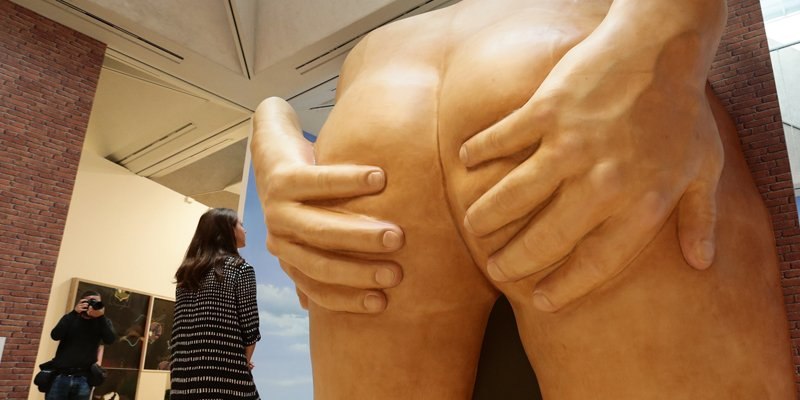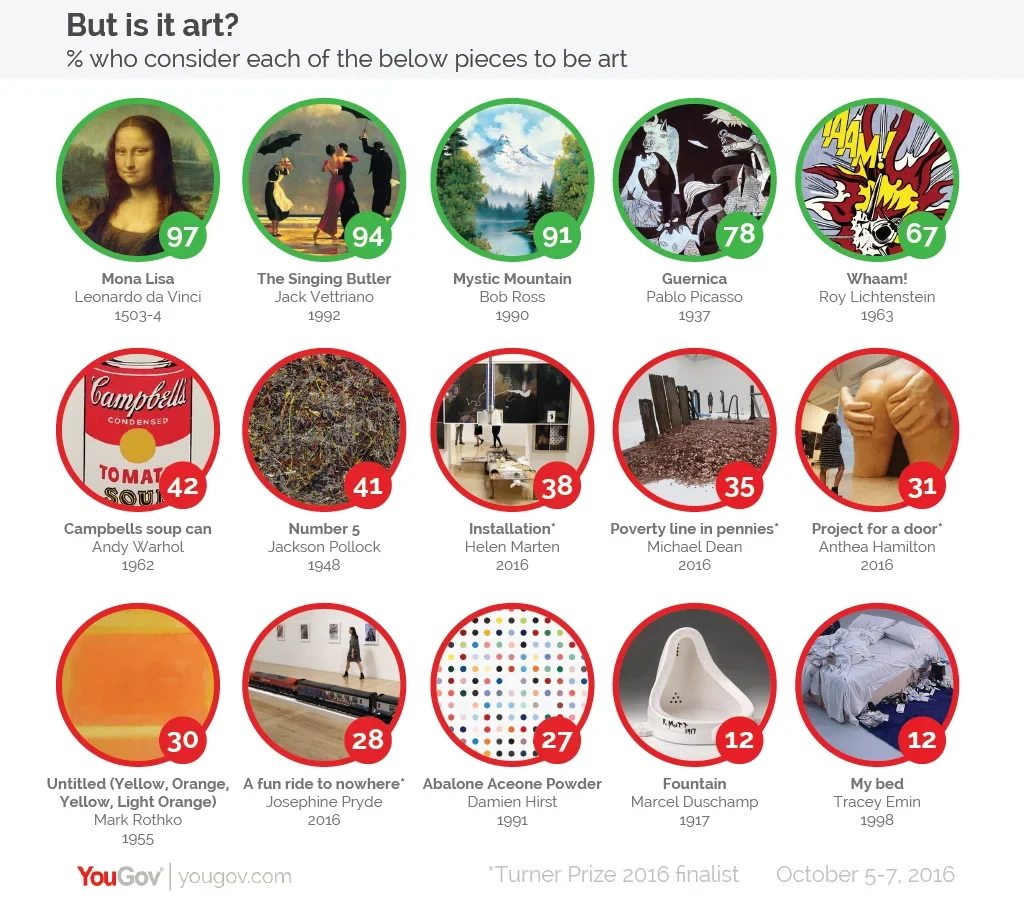According to most people none of this year's Turner Prize entries are art - but then nor is Mark Rothko or Marcel Duchamp
An entranceway in the form of a huge pair of buttocks, a large graffitied model train and £20,436 laid out on the floor in copper coins: these are artworks from three of the four finalists of 2016’s Turner Prize.
Each year when the Turner Prize unveils its latest set of finalists we can be sure of two things – the delight of the art critics and the utter disdain of the wider public. A new YouGov survey now shows just how large this gap has become.
YouGov tested fifteen artworks, including the four Turner Prize entries and a range of famous modern and traditional artworks, and found that none of the Turner Prize entries was considered to be art by more than 38% of the public.
Perhaps the Turner Prize’s most infamous previous entry – Tracey Emin’s ‘My Bed’ – is given even shorter shrift by the general public – just 12% of people consider the artist’s bed installation to be art.
Contrast this with the reception enjoyed by Jack Vettriano’s ‘The Singing Butler’. The piece is famous for being disliked by art critics, yet enjoyed by the public. Our survey confirms that as many as 94% of people consider it to be art. And ‘Mystic Mountain’ – a 1990 painting by teach-yourself-to-paint TV show host Bob Ross – was seen as art by 91% of people.
These are much higher rates than than the works of very famous artists like Andy Warhol, Jackson Pollock and Marcel Duschamp. Indeed, many seminal works by these artists are not considered art by the majority of the public, including Warhol's 'Campbells soup can' (42%) and Pollock's 'Number 5' (41%). Only Picasso's 'Guernica' and Lictenstein's 'Whaam!' are seen as art by more than half of the public, but at 78% and 67% respectively they still sit a long way behind pieces that critics would turn those noses up at.
Different sections of society do have more inclusive views of art than others though. The middle class, for instance, are more likely to consider a given work to be art than the working class are. On average over the 15 pieces shown, middle class people were ten percentage points more likely to say a given piece was art than working class people.
Likewise, younger people are far more likely to consider a piece to be art than their older peers. On average, the youngest age group (18-24 year olds) were 20 percentage points more likely to consider the works to be art than the older (those aged 65 or older).
Finally, Londoners also certainly seem to consider themselves to be an artistically inclined bunch - perhaps unsurprisingly given the city's status as cultural capital of the UK. On average, Londoners are five percentage points more likely to consider any of the 15 pieces to be art compared to the next highest area of the country for each piece.
Photo: PA













